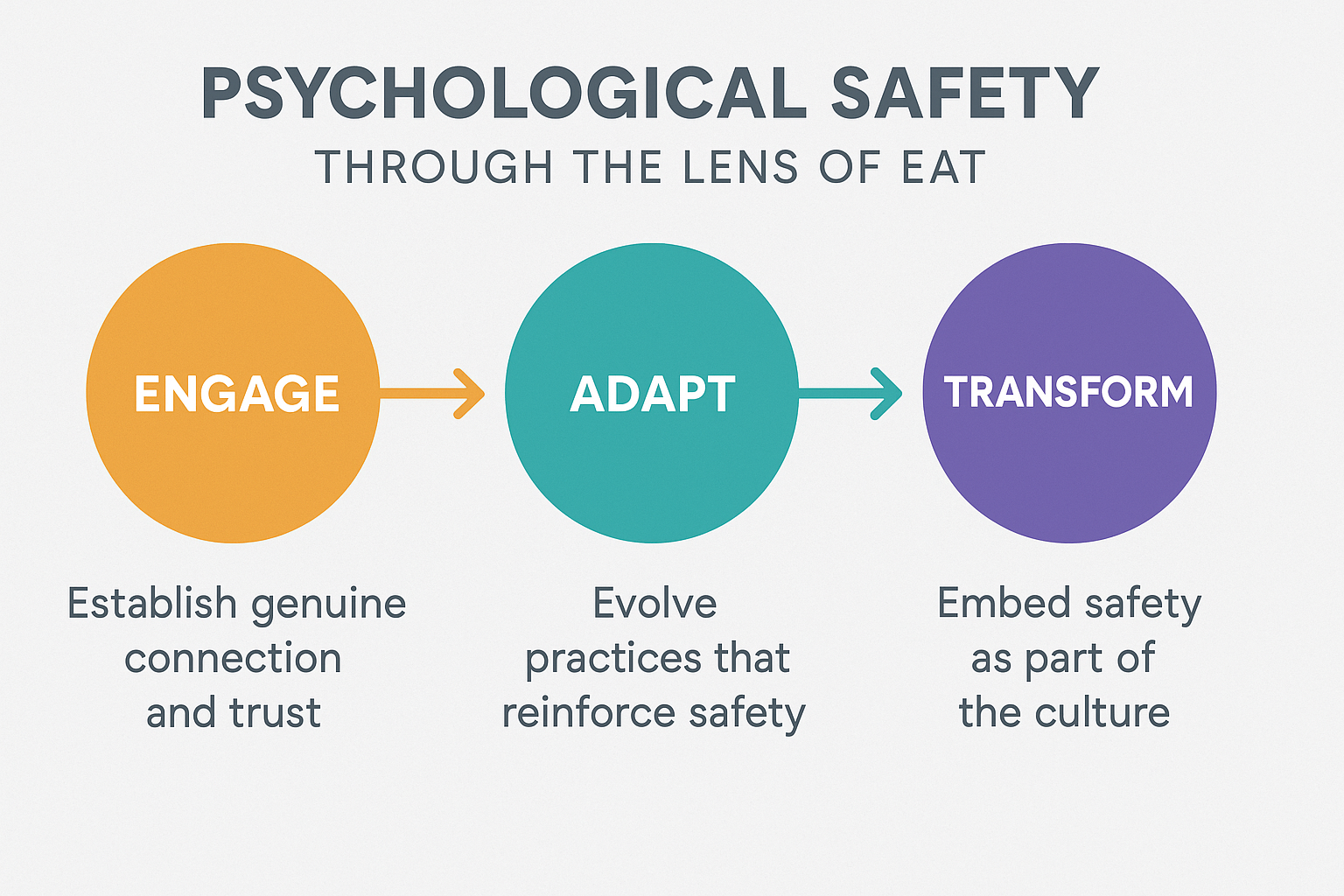In my recent conversation with Donald Thompson for WRAL TechWire, we explored the profound role of psychological safety in today’s workplace. For me, the discussion reinforced just how vital this idea is—not just as a feel-good concept, but as a business imperative. In the EAT Model—Engage, Adapt, Transform—psychological safety is not an afterthought. It is a core driver of how leaders create resilient, innovative, and high-performing cultures.
Donald noted that, in a time when trust in institutions has eroded, employees often trust their employers more than they trust media or government. That’s a remarkable shift—and a responsibility. Leaders have become stewards of trust, which means our ability to create a safe environment for ideas, questions, and even dissent is directly tied to business performance.
That’s Engage—the first pillar of the EAT Model. Engagement here is more than “communication” in the corporate sense. Rather, it is focused on creating authentic, human connections that give employees permission to share their perspective without fear of retribution. Without that foundation, psychological safety can’t take root.
But psychological safety isn’t static. This is where Adapt comes into play. Too often, adaptation is seen as something purely external—adjusting to market shifts, competitive pressures, or new technologies. In the EAT Model, adaptation is both external and internal. Leaders must continuously recalibrate their own behaviors, language, and even emotional intelligence to reinforce safety.
But how do leaders operationalize this idea?
Responding constructively to mistakes
Actively seeking feedback on how safe people feel
Making visible changes in response
Don’t forget, though, the organization’s role in creating psychological safety. Organizations must evolve policies and practices to reflect new realities, thereby shifting from one-way communication to genuine dialogue, for example, or embedding inclusive decision-making into daily routines.
When leaders commit to engagement and adaptation over time, transformation occurs. This is the third pillar of the EAT Model: cultural change that becomes part of an organization’s DNA. In practice, transformation looks like higher retention, more innovation, and stronger collaboration. But at a deeper level, it’s about creating an enduring culture of trust and learning. Then, psychological safety becomes a cultural safety net when the organization needs resilience, like weathering economic downturns, facing competitive disruption, or even experiences societal crises. As Donald pointed out, psychological safety is not only the right thing to do, it’s a competitive advantage.
From my perspective, applying the EAT Model to psychological safety gives leaders a clear roadmap:
Engage with empathy and authenticity
Adapt with both structural and personal change
Transform by embedding safety into the culture
The result is a workplace where people feel safe to speak up and are motivated to contribute their best thinking. This is an important outcome. In an era where the quality of ideas can determine the survival of an organization, that’s more than a nice-to-have. It’s a necessity.
The Leadership Value Proposition
The beauty of applying the EAT Model to psychological safety is its scalability. It works in small teams, global corporations, and even cross-cultural contexts where trust and open dialogue are harder to build. For leaders in marketing, communications, and digital industries—where creativity, speed, and collaboration are paramount—the EAT Model offers a lens for diagnosing cultural barriers and a roadmap for removing them. The return on investment is tangible: stronger employee retention, better decision-making, and a workforce that innovates faster than the competition.
Leaders who want to operationalize psychological safety—and reap its competitive benefits—should explore how the EAT Model can be integrated into their leadership practice. By focusing on engagement, adaptation, and transformation, you don’t just create safer workplaces—you create stronger, more resilient organizations.
